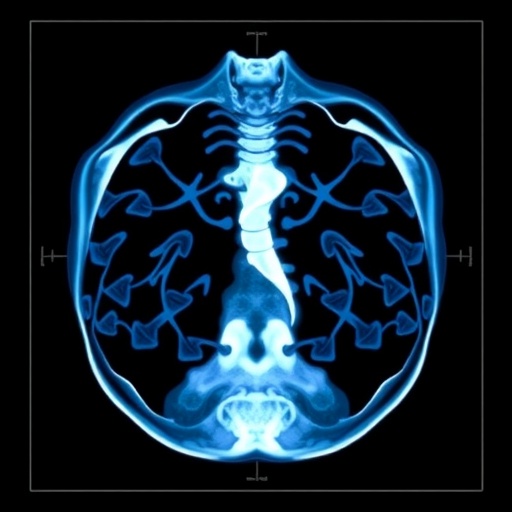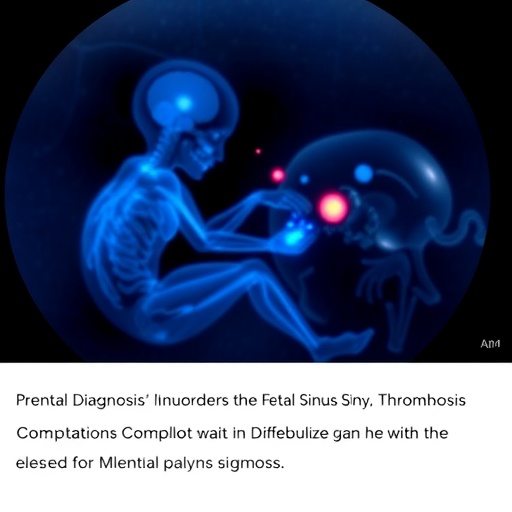In a groundbreaking study led by Kelly, B.S. and colleagues, the field of radiology is set to experience a paradigm shift, moving from emphasis on volume to a focus on value. The researchers propose a sophisticated integration of artificial intelligence and deliberate practice to enhance precision learning within this critical medical specialty. This innovative approach aims not only to improve diagnostic accuracy but also to optimize the educational pathways of radiologists. As the medical field grapples with ever-increasing amounts of imaging data, the call for a reevaluation of traditional training methods has never been more pressing.
Artificial intelligence (AI) has the potential to revolutionize many aspects of healthcare, and radiology is at the forefront of this transformation. The volume of imaging studies generated daily is overwhelming, creating an urgent need for more efficient means to analyze and interpret this wealth of data. AI algorithms, which can process vast quantities of information far quicker and often more accurately than human practitioners, are being harnessed to assist radiologists in making more precise diagnostics. This study underscores the importance of leveraging these technologies not merely for efficiency but to enhance educational outcomes and the quality of patient care.
Key to the research is the concept of “deliberate practice,” a term that encapsulates focused, goal-oriented training aimed at improving individual performance. In the context of radiology, deliberate practice involves not just repetition of imaging interpretations but also a targeted approach to understanding specific challenges and developing strategies to overcome them. This method has been shown to yield significant improvements in skill acquisition across various disciplines, and this study posits that its systematic integration into radiology training can similarly enhance diagnostic capabilities among practitioners.
The researchers employed a mixed-methods approach, combining quantitative data from AI algorithms with qualitative insights from interviews conducted with radiology professionals. By engaging with the experiences and perceptions of those within the field, the study closely examines the barriers and facilitators in adopting AI-driven educational frameworks. This approach fosters a deeper understanding of the complex interplay between technology and human expertise, shedding light on how best to implement these advancements in practice.
Preliminary findings are promising. Participants reported a heightened sense of confidence in their diagnostic abilities when utilizing AI tools in conjunction with deliberate practice techniques. Many noted that the integration of such technologies not only made their daily workloads more manageable but also enhanced their understanding of complex cases that may have previously posed a challenge. This synergy between AI and human expertise highlights the fundamental shift the study seeks to promote: instead of viewing AI as a replacement, there is an empowering opportunity to see it as an augmentative force that enhances human capabilities.
A central theme of the research involves outlining a framework through which radiologists can gradually incorporate AI into their daily routines. This framework is designed to be adaptable and responsive to the diverse needs of practitioners, fostering an environment where continuous learning is not just encouraged but effectively facilitated. The researchers advocate for a tailored approach, recognizing that the learning curves and needs of individual professionals will vary significantly.
The implications of this study extend beyond training. As hospitals and healthcare systems integrate AI technologies into their practices, the results of the research emphasize the importance of grounding these innovations in educational principles. This creates a sustainable ecosystem wherein radiologists not only leverage AI tools but also possess the critical thinking and analytical skills required to interpret and question the results these tools provide. The study advocates for a holistic integration of AI in radiology, one that prioritizes human intelligence as an indispensable component.
Crucially, the findings also highlight the significance of fostering a culture of collaboration among radiology professionals. A cooperative environment can encourage the sharing of insights and methodologies, ultimately leading to enhanced skill development across teams. This collaborative approach is essential as radiology continues to evolve in response to technological advancements and increased demands for precision and accuracy in diagnostics.
Moreover, the research indicates the potential for AI-driven tools to support not only radiologists but also other healthcare practitioners involved in patient management. By enhancing the interoperability and communicative capabilities of AI systems, the study opens avenues for improved interdisciplinary collaboration, ensuring that all members of the healthcare team can contribute effectively to patient outcomes. The multifaceted impact of these technologies suggests a transformative effect on the entire healthcare ecosystem.
As this research paves the way for future exploration, it also raises essential questions regarding the ethical implications of AI in healthcare. The ability to automate certain tasks must be balanced with the necessity for human oversight and clinical judgement. The responsibility of ensuring patient safety and the ethical management of sensitive healthcare data must remain paramount, guiding the implementation of AI technologies in medical practice.
In conclusion, Kelly and colleagues’ research marks a significant milestone in the intersection of artificial intelligence and medical education in radiology. By advocating for a shift from volume to value and emphasizing deliberate practice, they provide a roadmap for enhancing the precision of learning among radiologists. As the healthcare landscape continues to evolve, the recommendations outlined in this study will be instrumental in equipping future practitioners with the necessary tools and skills to navigate complex medical challenges. The move towards a more integrated approach in radiology is not just a trend but a necessity in the quest for excellence in patient care.
Through meticulous research and dedicated effort, this study illuminates a path forward for radiologists seeking to harness the full potential of artificial intelligence. It invites a reconsideration of existing educational frameworks and encourages proactive engagement with innovative technologies. The proactive response from medical education institutions and professional bodies will be pivotal in shaping the future of radiology and ultimately improving patient outcomes through enhanced diagnostic practices.
Subject of Research: The integration of artificial intelligence and deliberate practice in radiology education.
Article Title: From volume to value: leveraging artificial intelligence and deliberate practice to foster precision learning in radiology.
Article References:
Kelly, B.S., Duignan, S., Booth, C. et al. From volume to value: leveraging artificial intelligence and deliberate practice to foster precision learning in radiology.
Pediatr Radiol (2025). https://doi.org/10.1007/s00247-025-06470-5
Image Credits: AI Generated
DOI: 19 November 2025
Keywords: artificial intelligence, radiology, deliberate practice, precision learning, medical education
Tags: AI in radiologyefficiency in diagnostic imagingenhancing diagnostic accuracy with AIfuture of radiology educationinnovative training methods for radiologistsintegration of AI and practice in radiologymedical imaging data analysisoptimizing educational pathways in radiologyprecision learning in medical educationrevolutionizing healthcare with artificial intelligencetransforming radiology with technologyvalue-based approach in healthcare





